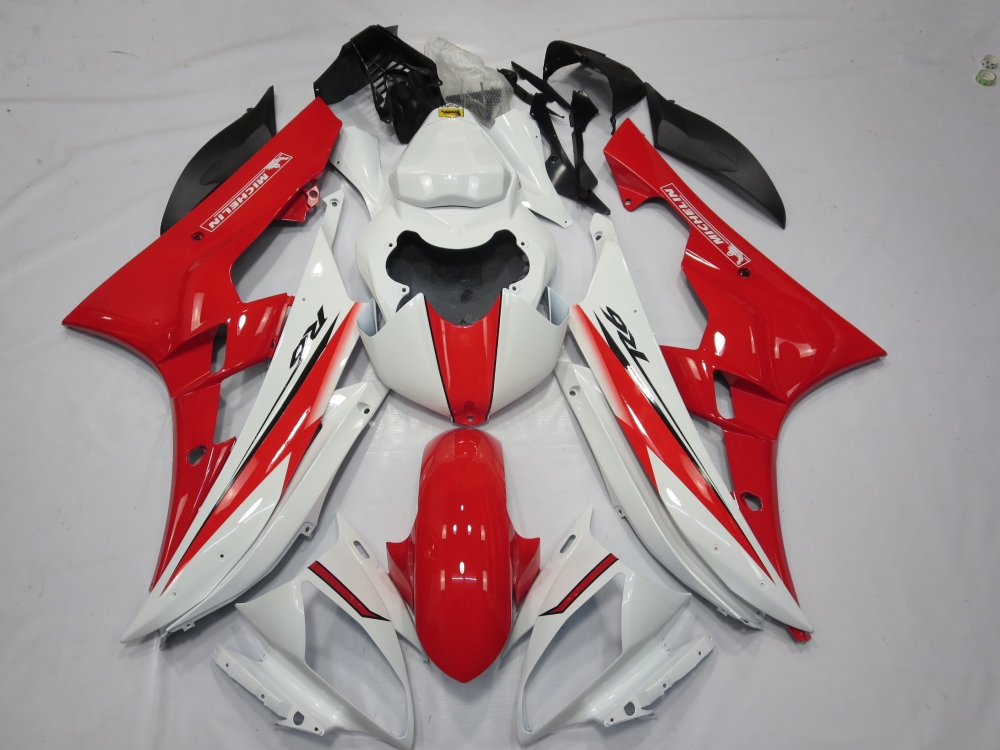Why Fairing Color Matters for Your ZX-6R
Fairings aren’t just protective gear for your sportbike—they’re an extension of your identity on the road. Whether you’re carving through canyons, riding track days, or showing off at meets, the right color transforms your ZX-6R from fast to unforgettable.
At MonsterFairings.com, our color kits are more than just covers—they’re personality statements built to fit perfectly, impress visually, and last through all riding seasons.
2025 ZX-6R Color Trends Overview
While the factory 2023–2024 Kawasaki ZX-6R arrives in Lime Green/Ebony/White and Metallic Flat Spark Black, riders are embracing far more vivid, creative, and custom color kits in 2025. Matte finishes, neon accents, and carbon textures are stealing the spotlight—and we’ve narrowed down the top 5 fairing colors that are trending hard in both performance circles and custom builds.
Top 5 ZX-6R Fairing Colors for 2025
1. Emerald Gloss Green – KRT-Inspired Boldness
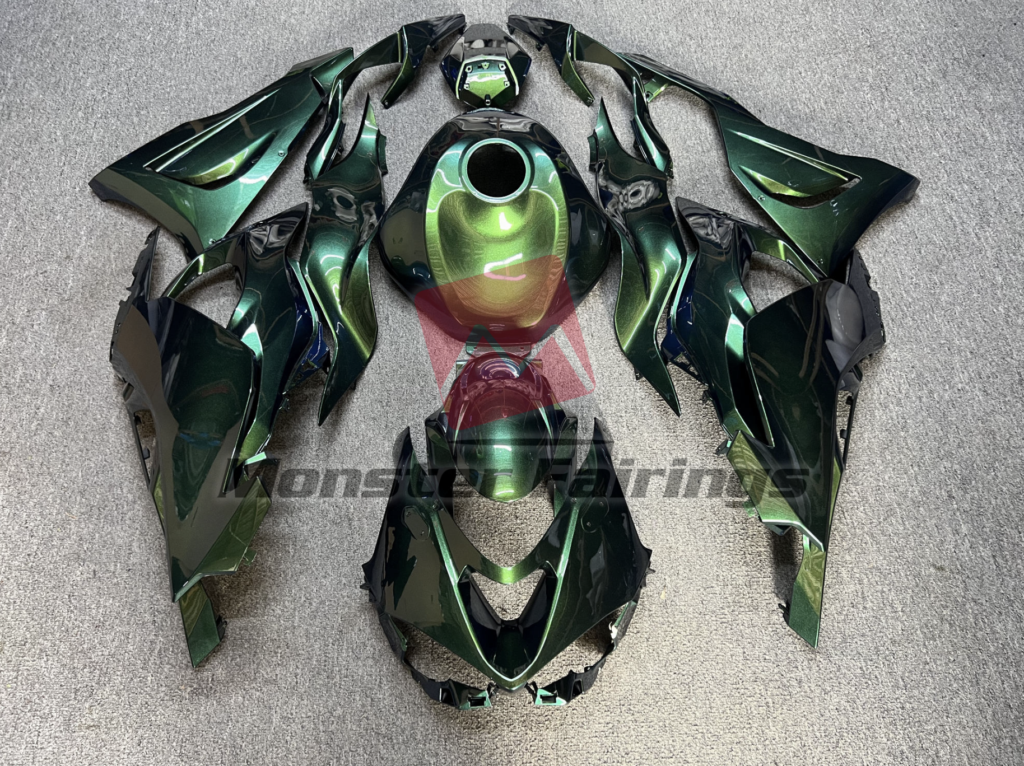
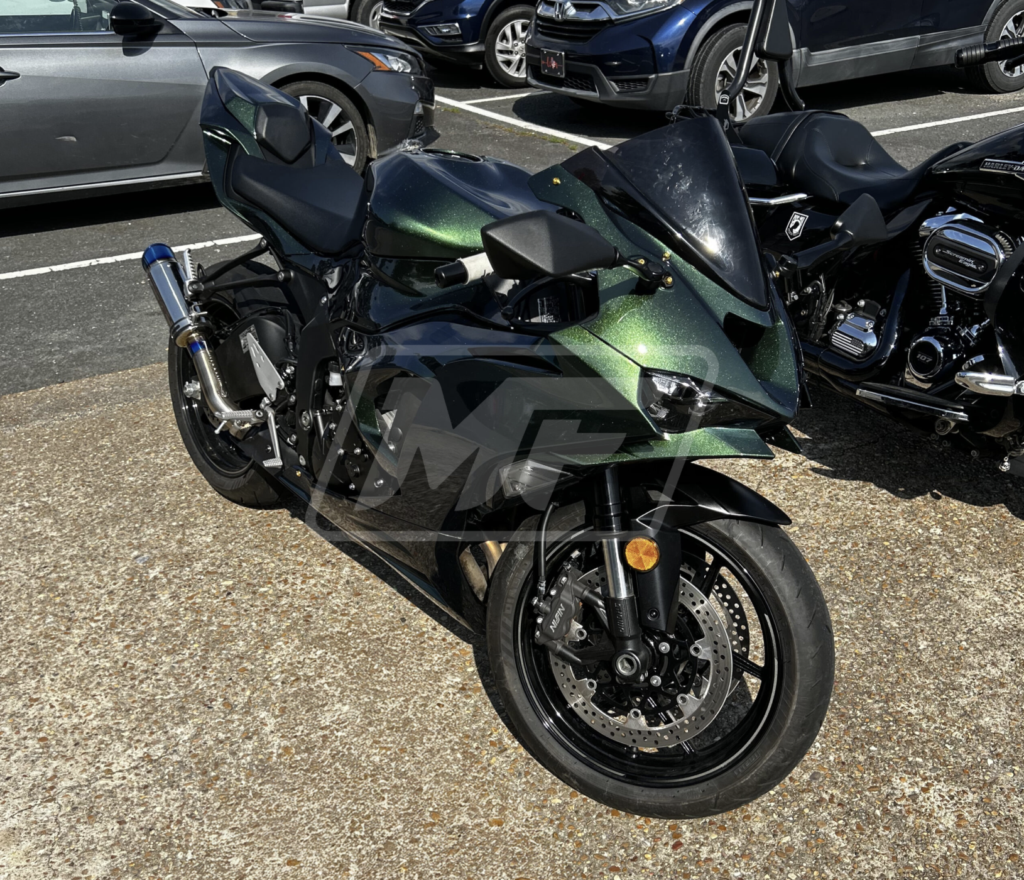
Bold, rich, and track-ready, this Emerald Gloss Green kit channels that factory Kawasaki Racing Team (KRT) vibe but with a more vivid metallic pop. Ideal for riders who crave aggressive color intensity with premium gloss reflection.
- Looks stunning in daylight and under LED lighting
- Amplifies ZX-6R’s race aesthetic
- Stays close to Kawasaki roots while standing out
👉 Shop the Emerald Gloss Green Kit now
2. Gloss Blue – Classic Meets Clean
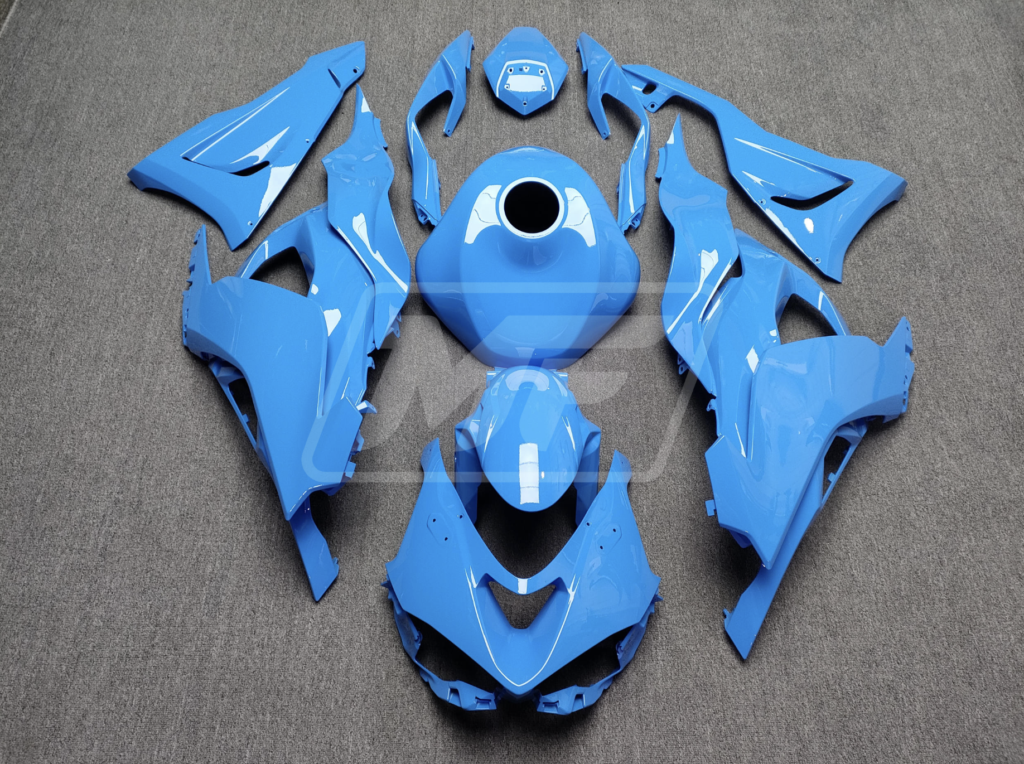
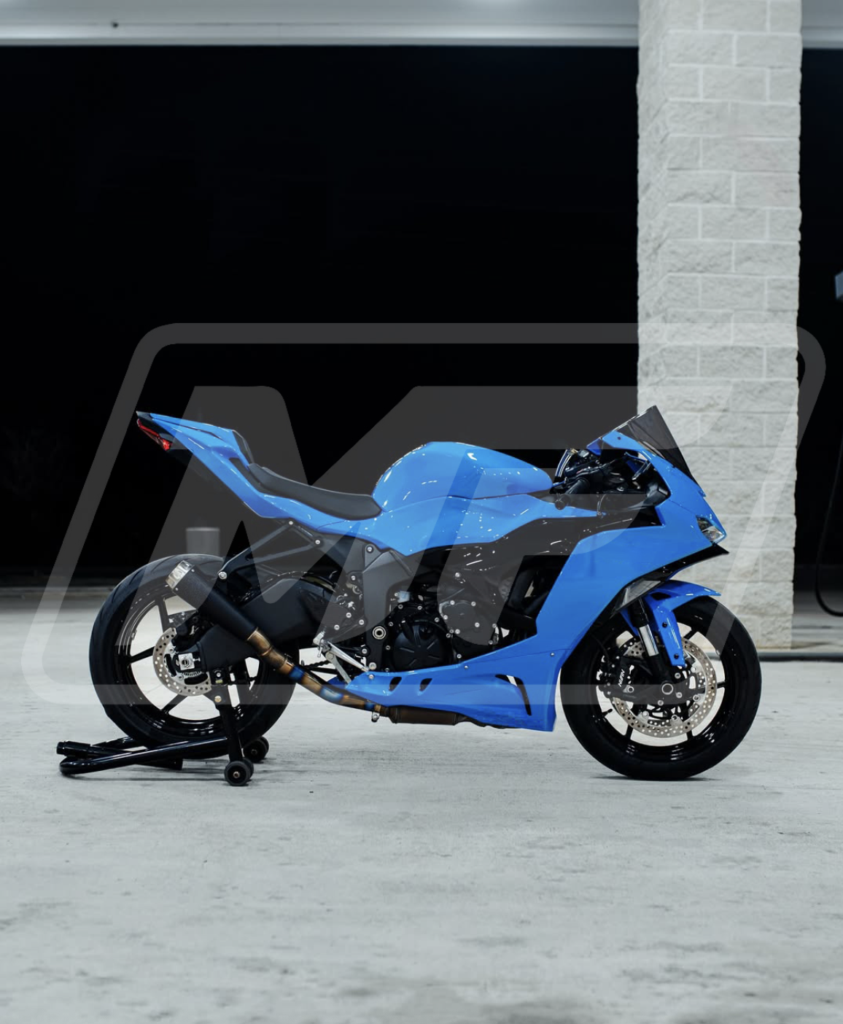
Sleek, crisp, and effortlessly timeless, this Gloss Blue kit is a minimalist’s dream. It enhances the bike’s form while giving off premium factory-clean vibes.
- Perfect for both casual and commuter riders
- Easy to match with gear and accessories
- Polished look with universal rider appeal
3. OEM-Style White with Red Accents – Factory Fresh Feel
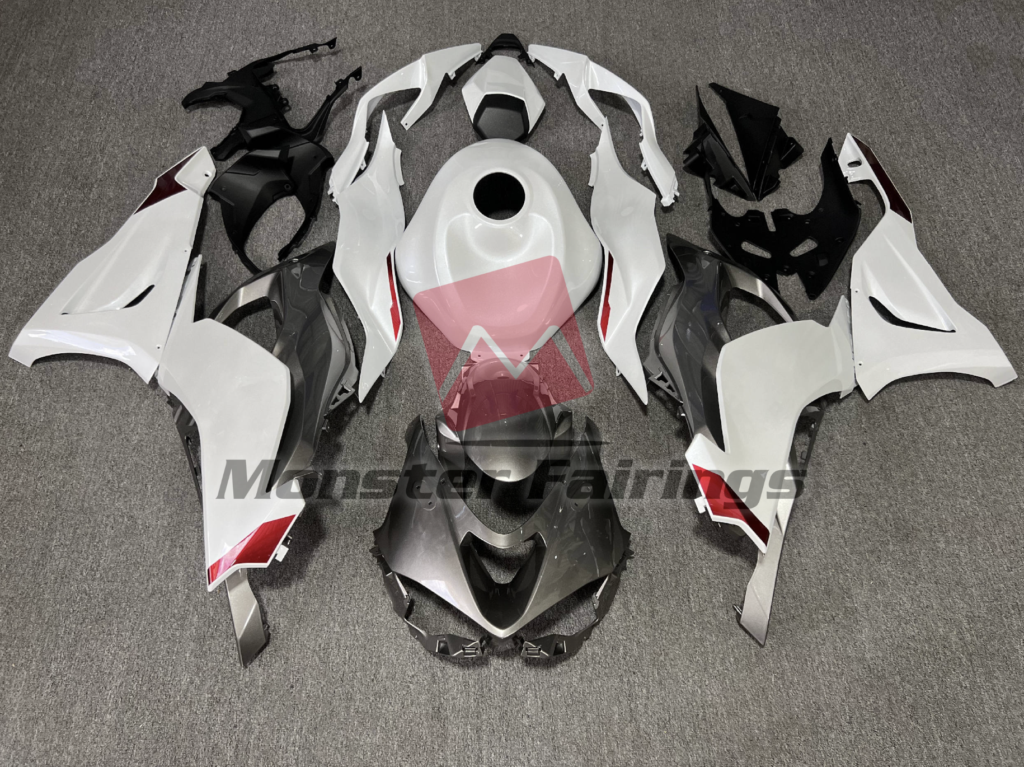
Want your ZX-6R to scream performance without going custom wild? This OEM white with red accents offers that official championship-inspired design with refined style.
- OEM-match aesthetic for showroom-ready presence
- Clean lines with subtle red aggression
- Ideal for those who want a new-bike look
4. Carbon Fiber Style – Performance-Look Edge
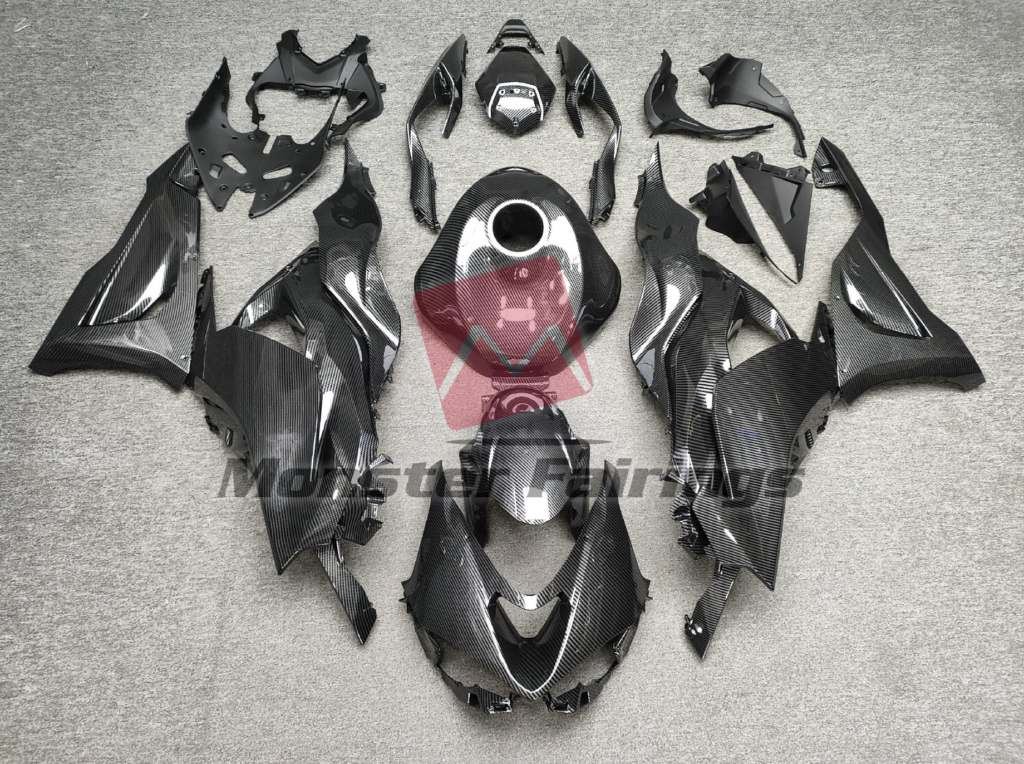
Raw. Tactical. Stylish. The Carbon Fiber Style fairing kit brings depth and a motorsport-driven texture to your ride without the weight of real carbon.
- Emulates superbike feel
- Matches dark riding gear and components
- Low-profile while oozing sophistication
5. Forged Carbon + Cherry Blossom Split – Artistic Custom Fusion
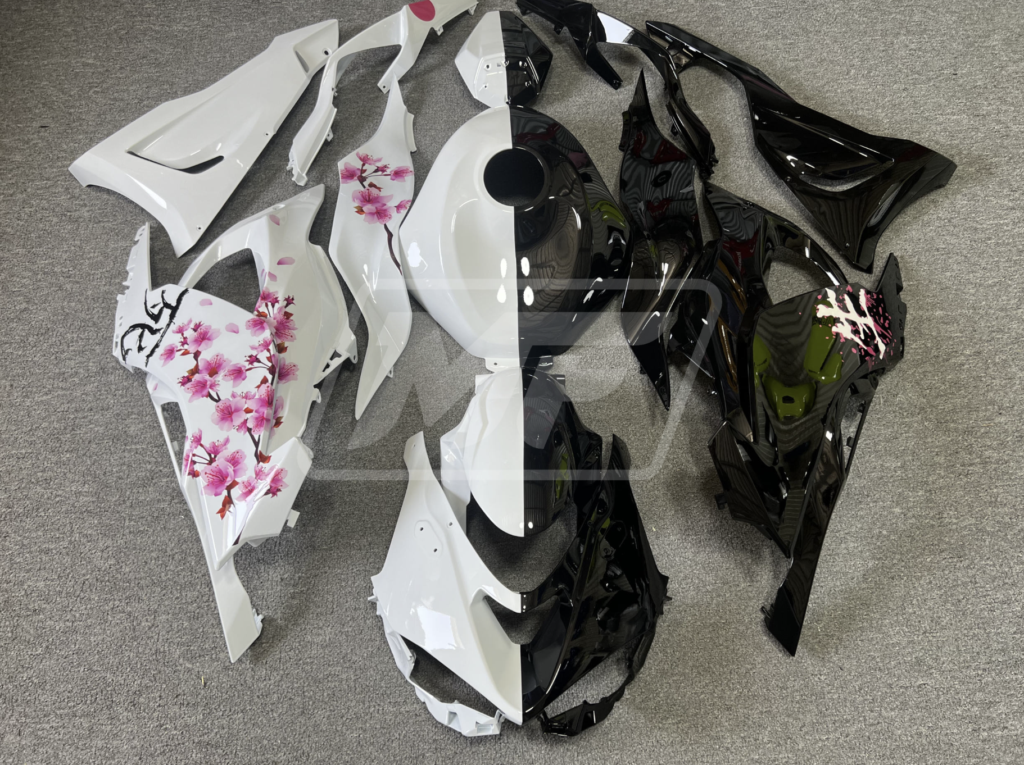
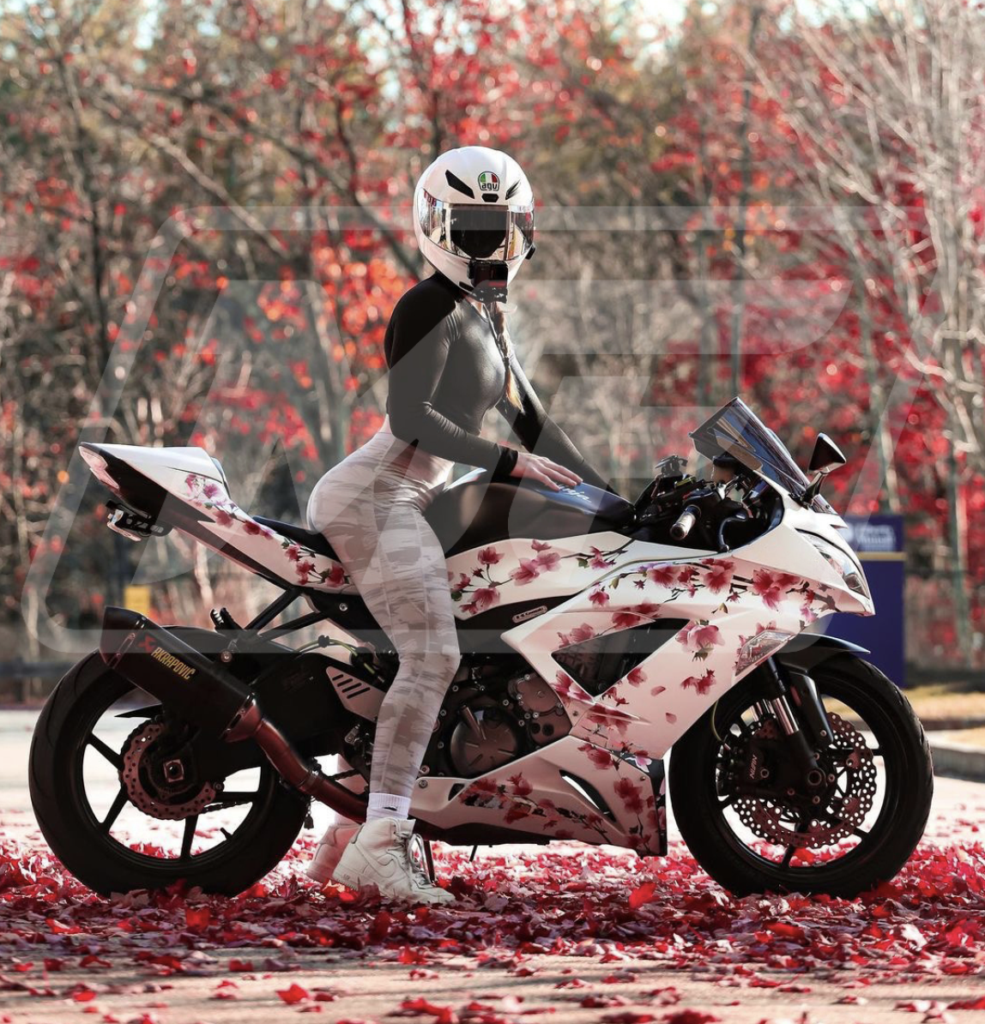
A head-turning combo of Forged Carbon Fiber on one side and elegant Cherry Blossom floral art on the other. This split-color kit is for riders who live to be different.
- Customizers, content creators, show bikes
- Riders who want one-of-a-kind paintwork
- People who ride loud and live louder
Color Trends to Watch in 2025
- Matte finishes with bright accent decals
- Forged carbon look gaining major traction in sportbike culture
- Split and asymmetrical designs creating buzz on social and showroom floors
- Neon reflective accents being added for visibility and flash
Gloss vs. Matte: Style vs. Practicality
| Finish | Benefits | Considerations |
|---|---|---|
| Gloss | Bold shine, vivid reflection | Durability against scratches |
| Matte | Sleek, stealthy, modern | Needs matte-specific cleaners |
| Carbon | Technical edge, stylish texture | Darker tones may reduce visibility |
Which Color Style Matches You?
| Rider Type | Best Match |
|---|---|
| Track Warrior | Emerald Gloss Green |
| Daily Rider | Gloss Blue |
| OEM Fan | White & Red Kit |
| Tech Enthusiast | Carbon Fiber Look |
| Individualist | Cherry Blossom Split |
Fairing Color Care Tips
- Use Monster Fairings UV Protective Coating sprays to reduce fade
- Clean with microfiber cloths to avoid swirl marks
- Avoid power washers near decal lines
- Choose scratch-resistant waxes for gloss finishes
Explore Fairing Kits at MonsterFairings.com
- 🛒 Shop by ZX-6R color kits now
- 🔧 Custom paint jobs available upon request
- 🔗 100% fitment guarantee + free hardware kits
FAQs
Emerald gloss, forged carbon, and matte neon-accented styles are dominating this year’s builds.
Gloss pops more visually but shows scratches; matte hides wear better but needs special care.
Yes! MonsterFairings.com offers full customization options—just contact our team.
Use contrast theory—if your fairing is bright, go with dark gear and vice versa for standout balance.


